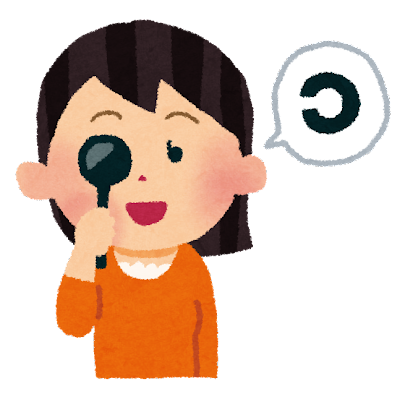Have you ever wondered if it’s okay to answer during a vision test even when your sight is blurry?
In conclusion: even if your vision is blurry, it’s okay to respond if you can see something at all.
You may think this won’t give an accurate result, but vision tests don’t check for perfect clarity—they assess whether you can recognize the notch in the blurry circle.
Don’t worry—your vision is not judged by one response; the same size is checked multiple times.
Based on your accuracy, a “p” for partial is added to your score.
For example, 1.5p means you can’t fully see 1.5 but can see better than 1.2.
So even if it’s blurry, go ahead and answer if you can roughly see the gap.
If you really can’t see the notch, it’s perfectly fine to say “I don’t know.”
Now, here are some things to keep in mind during the exam:
- ・Do not squint your eyes.
- This creates a “pinhole effect,” making things temporarily clearer and compromising accuracy.
- ・Do not move your face or body closer or farther from the chart.
- ・Please remove your hat if possible.
- The brim of the hat may change lighting conditions.
- Distance and lighting conditions are important for eyesight examination.
- ・Blink as usual.
- Not blinking can cause temporary blurriness.
- ・Do not squint your eyes.
- This creates a “pinhole effect,” making things temporarily clearer and compromising accuracy.
- ・Do not move your face or body closer or farther from the chart.
- ・Please remove your hat if possible.
- The brim of the hat may change lighting conditions.
- Distance and lighting conditions are important for eyesight examination.
- ・Blink as usual.
- Not blinking can cause temporary blurriness.
We hope this helps you get an accurate vision test result.




